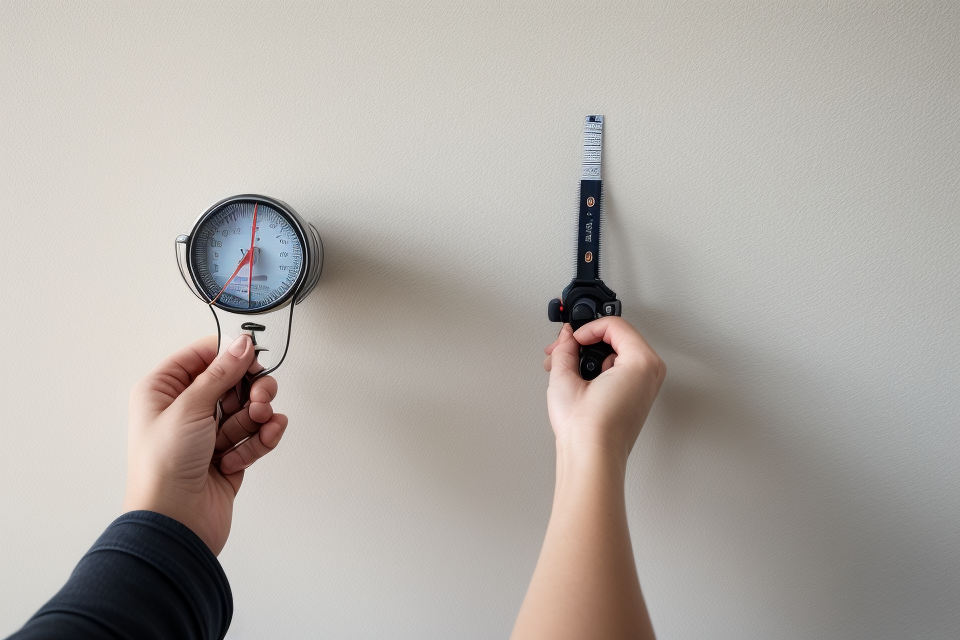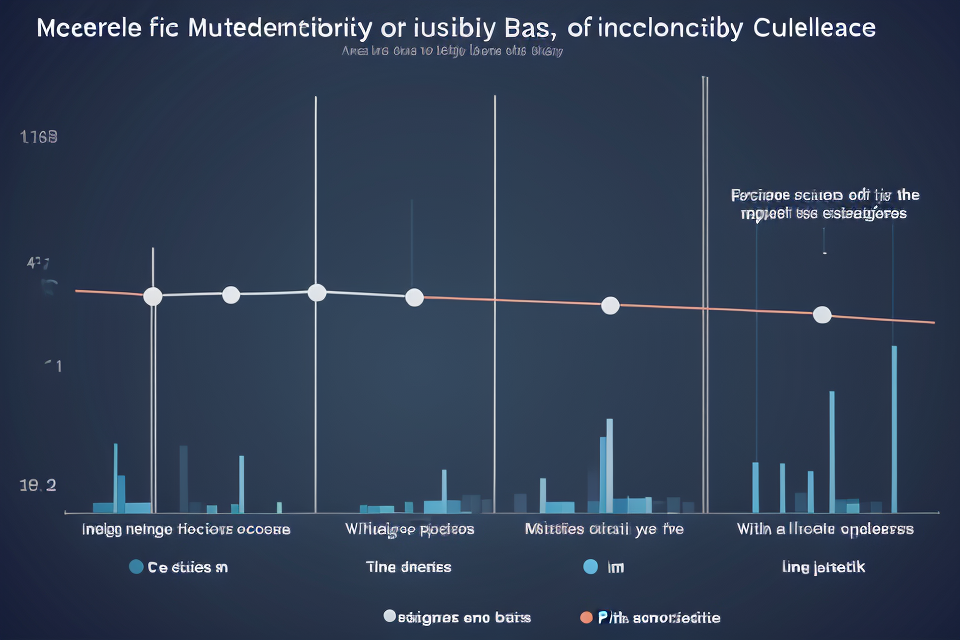
Are you looking to improve your accuracy and precision in a particular task or field? Whether it’s in sports, academics, or professional work, having a high level of accuracy and precision is crucial for success. However, improving these skills can be a challenge. But fear not, there are many tips and techniques that can help you enhance your accuracy and precision. In this article, we will explore some of the best ways to improve your accuracy and precision, so you can perform at your best in any situation. Whether you’re a student, athlete, or professional, this article has something for everyone. So, let’s dive in and start improving our accuracy and precision today!
Understanding Accuracy and Precision
Definition of Accuracy
Accuracy refers to the degree of closeness or correctness of a measured or calculated value in relation to the true value. In other words, it is the extent to which a measurement or calculation corresponds to the actual value of the quantity being measured or calculated.
Accuracy is an important concept in many fields, including science, engineering, finance, and medicine. In these fields, accuracy is critical for ensuring that measurements and calculations are reliable and can be used to make informed decisions.
In scientific research, accuracy is important for ensuring that experimental results are reproducible and can be used to support or refute scientific hypotheses. In engineering, accuracy is essential for designing and building safe and efficient structures and systems. In finance, accuracy is important for making accurate predictions about market trends and for ensuring that financial transactions are fair and transparent. In medicine, accuracy is crucial for diagnosing and treating patients effectively and for developing new treatments and therapies.
Overall, accuracy is a critical concept in many fields, and improving accuracy is essential for making informed decisions and achieving successful outcomes.
Definition of Precision
Precision refers to the degree of consistency or reproducibility of a measurement or analysis. It is the extent to which repeated measurements or analyses produce the same results. Precision is important in various fields such as science, engineering, and medicine, where accuracy and consistency are crucial for valid and reliable results. In contrast, accuracy refers to the degree of agreement between the measured or calculated values and the true values. Therefore, while precision is concerned with the reproducibility of results, accuracy is concerned with the truthfulness of the results.
Common Causes of Ineffective Accuracy and Precision
Human Error
Types of human errors that affect accuracy and precision
- Perception errors: These occur when an individual misinterprets information due to a lack of attention or poor visual acuity. Examples include misreading numbers or identifying the wrong color.
- Memory errors: These occur when an individual forgets information or remembers it incorrectly. Examples include transcribing information incorrectly or misremembering a measurement.
- Decision-making errors: These occur when an individual makes an incorrect decision based on incomplete or inaccurate information. Examples include selecting the wrong option on a multiple-choice test or making an incorrect calculation.
Strategies to minimize human errors
- Double-checking: This involves verifying information by comparing it to a separate source or repeating the task to ensure accuracy.
- Using tools: Tools such as calculators, rulers, and measurement devices can help minimize human errors by providing precise measurements and calculations.
- Proper training: Providing proper training and education to individuals can help reduce human errors by ensuring that they have the necessary skills and knowledge to perform tasks accurately.
- Standardizing procedures: Standardizing procedures and protocols can help minimize human errors by ensuring that tasks are performed consistently and accurately.
- Encouraging communication: Encouraging open communication and collaboration among team members can help reduce human errors by allowing individuals to share information and verify accuracy.
Equipment or Tools Used
Equipment or tools used in a process can greatly affect the accuracy and precision of the final output. There are various types of equipment or tools that can be used in different industries, each with its own advantages and disadvantages. For instance, in construction, a level is used to ensure that the surface is flat and even, while in cooking, a thermometer is used to measure the temperature of food.
When selecting equipment or tools, there are several factors to consider. Firstly, the cost of the equipment or tool should be taken into account. It is important to determine whether the cost is justifiable based on the benefits it provides. Secondly, the ease of use and maintenance of the equipment or tool should be considered. The equipment or tool should be user-friendly and easy to maintain to ensure that it can be used efficiently. Finally, the accuracy and precision of the equipment or tool should be evaluated. It is important to select equipment or tools that can provide accurate and precise results to ensure that the final output meets the desired standards.
By considering these factors, it is possible to select the right equipment or tools that can improve accuracy and precision. In addition, regularly maintaining and calibrating the equipment or tools can help to ensure that they continue to provide accurate and precise results.
Techniques to Improve Accuracy and Precision
Calibration and Standardization
Explanation of Calibration and Standardization
Calibration and standardization are essential techniques used to improve the accuracy and precision of data analysis. Calibration refers to the process of adjusting measurements to a known standard, while standardization involves transforming data to a common scale or metric.
Importance of Calibration and Standardization in Improving Accuracy and Precision
Calibration and standardization are critical in improving the accuracy and precision of data analysis. They help in ensuring that measurements are consistent and comparable across different data sets.
Calibration is important because it eliminates measurement errors that can arise due to variations in measurement instruments or techniques. Standardization is essential because it enables the comparison of data sets that have different scales or metrics.
Calibration and standardization can be performed using various methods, including statistical analysis, machine learning algorithms, and domain-specific standards. The choice of method depends on the nature of the data and the research question being addressed.
Overall, calibration and standardization are crucial techniques that can significantly improve the accuracy and precision of data analysis. They enable researchers to make more reliable and valid inferences from their data, which is essential for scientific discovery and decision-making.
Replication and Verification
Explanation of Replication and Verification
Replication and verification are two techniques used to improve the accuracy and precision of data analysis. Replication involves repeating an experiment or analysis multiple times to ensure that the results are consistent and reliable. Verification involves checking the results of an analysis against independent sources or datasets to confirm their accuracy.
Importance of Replication and Verification in Improving Accuracy and Precision
Replication and verification are essential techniques for improving the accuracy and precision of data analysis. By repeating an experiment or analysis multiple times, replication helps to reduce the impact of random errors and confirm the stability of the results. This technique also helps to identify any systematic biases or errors that may be present in the data or analysis process.
Verification, on the other hand, helps to confirm the accuracy of the results by comparing them against independent sources or datasets. This technique can help to identify any discrepancies or inconsistencies in the data or analysis process, and ensure that the results are consistent with real-world observations or expectations.
Both replication and verification are important techniques for improving the accuracy and precision of data analysis. By using these techniques, researchers can increase the reliability and credibility of their results, and ensure that their conclusions are based on sound evidence.
Proper Data Collection and Management
Explanation of Proper Data Collection and Management
Proper data collection and management refer to the systematic and organized process of gathering, organizing, and maintaining data. This process plays a crucial role in improving the accuracy and precision of data analysis. It involves several steps, including defining the research question, selecting the appropriate data collection method, collecting the data, cleaning and preprocessing the data, and storing and managing the data.
Importance of Proper Data Collection and Management in Improving Accuracy and Precision
Proper data collection and management are essential in ensuring the accuracy and precision of data analysis. Poor data collection and management can lead to inaccurate and imprecise results, which can have serious consequences in various fields, such as business, healthcare, and research. Inaccurate data can lead to incorrect decisions, which can result in financial losses, poor patient outcomes, and wasted resources.
Defining the Research Question
The first step in proper data collection and management is defining the research question. The research question should be clear, specific, and relevant to the study. It should also be based on the hypothesis or problem that the study aims to address. Defining the research question helps in identifying the data that needs to be collected and the methods that will be used to collect and analyze the data.
Selecting the Appropriate Data Collection Method
After defining the research question, the next step is to select the appropriate data collection method. There are several data collection methods, including surveys, interviews, observations, and experiments. Each method has its advantages and disadvantages, and the choice of method depends on the research question and the type of data required. For example, surveys are useful for collecting large amounts of data from a large sample size, while interviews are useful for collecting in-depth information from a small sample size.
Collecting the Data
Once the data collection method has been selected, the next step is to collect the data. The data collection process should be systematic and structured to ensure that all relevant data is collected. The data should be collected in a way that minimizes errors and biases. For example, surveys should be pilot-tested before being administered to the sample to ensure that the questions are clear and unambiguous.
Cleaning and Preprocessing the Data
After the data has been collected, the next step is to clean and preprocess the data. This involves checking the data for errors, outliers, and missing values. The data should also be transformed and reformatted as necessary to ensure that it is in a usable format for analysis. For example, numerical data should be scaled and coded, while categorical data should be categorized and coded.
Storing and Managing the Data
The final step in proper data collection and management is storing and managing the data. The data should be stored in a secure and accessible location, such as a database or a cloud storage platform. The data should also be managed by creating backups, updating the data as necessary, and ensuring that the data is protected from unauthorized access.
In conclusion, proper data collection and management are essential in improving the accuracy and precision of data analysis. It involves several steps, including defining the research question, selecting the appropriate data collection method, collecting the data, cleaning and preprocessing the data, and storing and managing the data. By following these steps, researchers and analysts can ensure that their data is accurate, reliable, and useful for decision-making.
Training and Education
Explanation of the Role of Training and Education in Improving Accuracy and Precision
In any field, whether it be sports, music, or science, training and education play a crucial role in improving accuracy and precision. By providing individuals with the necessary knowledge and skills, training and education can help them to make more accurate and precise movements, decisions, and calculations. In the field of data analysis, for example, training and education can help analysts to make more accurate predictions and calculations by providing them with a deeper understanding of statistical methods and software tools.
Importance of Ongoing Training and Education
While initial training and education may provide individuals with the basic knowledge and skills needed to perform a task accurately and precisely, it is important to continue to engage in ongoing training and education in order to maintain and improve these abilities. As new techniques and tools are developed, and as technology evolves, it is important to stay up-to-date with the latest advancements in order to remain competitive and effective in one’s field. Ongoing training and education can also help to identify and correct any gaps in knowledge or skills, and can provide individuals with the opportunity to network and collaborate with others in their field.
Use of Technology
Technology has revolutionized the way we live, work, and communicate. It has also greatly impacted the field of research and writing, providing a range of tools and resources that can help improve accuracy and precision. Here are some tips on how to make the most of technology to enhance the quality of your work:
Importance of Staying Up-to-Date with Technological Advancements
Technology is constantly evolving, and it is important to stay up-to-date with the latest advancements in order to take advantage of the tools and resources that can help you improve your writing. Keep yourself informed about new software, apps, and platforms that can help you streamline your writing process, fact-check information, and collaborate with others.
Using Research Tools
There are a variety of research tools available that can help you find accurate and reliable information. These include online databases, academic search engines, and reference management software. By using these tools, you can save time and ensure that the information you use in your writing is credible and trustworthy.
Using Grammar and Spell Checkers
Grammar and spell checkers are a great way to catch errors and ensure that your writing is free of mistakes. These tools can help you identify common grammar and spelling errors, as well as provide suggestions for improving sentence structure and word choice. While they are not perfect, they can be a helpful resource for improving the overall quality of your writing.
Using Citation Management Software
Citation management software can help you keep track of the sources you use in your writing, as well as format your citations correctly. This can save you a lot of time and reduce the risk of errors in your citations. There are a variety of options available, including free and paid options, so you can choose the one that best fits your needs.
By using technology to your advantage, you can improve the accuracy and precision of your writing. Stay up-to-date with the latest advancements, take advantage of research tools, use grammar and spell checkers, and consider using citation management software to help you stay organized and ensure that your writing is of the highest quality.
Best Practices for Maintaining Accuracy and Precision
Documentation and Record Keeping
Explanation of the Importance of Documentation and Record Keeping
Effective documentation and record keeping are critical components of maintaining accuracy and precision in any field. Documentation provides a clear and detailed record of the work that has been done, the results achieved, and the decisions made along the way. It also serves as a valuable reference for future work, enabling teams to learn from past experiences and build on their successes. Record keeping, on the other hand, involves the systematic collection and organization of data, information, and knowledge related to a particular project or process. By maintaining accurate and up-to-date records, teams can ensure that they have access to the information they need to make informed decisions and take effective action.
Tips for Effective Documentation and Record Keeping
- Develop a consistent and comprehensive documentation plan: This should include clear guidelines for what should be documented, how it should be documented, and who is responsible for doing the documentation. The plan should also specify how the documentation will be stored, accessed, and updated over time.
- Use a standardized format: To ensure that documentation is easy to read and understand, use a standardized format that is consistent across all documents. This could include using headings, subheadings, bullet points, and other formatting tools to organize the information and make it more accessible.
- Be thorough and detailed: When documenting work, be sure to capture all relevant details, including who was involved, what was done, when it was done, and why it was done. This will help ensure that the documentation is complete and provides a clear and accurate record of the work that was done.
- Keep records up-to-date: Regularly review and update records to ensure that they are accurate and current. This will help prevent errors and ensure that teams have access to the most recent information.
- Train team members on documentation and record keeping: Provide training and support to team members on the importance of documentation and record keeping, and how to do it effectively. This will help ensure that everyone on the team is following the same procedures and using the same format, which will help maintain consistency and accuracy over time.
Regular Audits and Reviews
Explanation of the Importance of Regular Audits and Reviews
- Ensuring the accuracy and precision of data is crucial for any organization or business
- Regular audits and reviews are necessary to maintain the quality of data over time
- They help identify errors, inconsistencies, and discrepancies in data
- By addressing these issues, regular audits and reviews contribute to the overall integrity of data
Tips for Conducting Effective Audits and Reviews
- Develop a systematic approach to data audits and reviews
- Assign responsibilities to specific individuals or teams
- Schedule regular audits and reviews at fixed intervals
- Utilize appropriate tools and software for data analysis
- Document all findings and take corrective actions promptly
- Train employees on the importance of data accuracy and how to perform audits and reviews effectively
- Communicate the results of audits and reviews to relevant stakeholders
- Continuously improve the process of audits and reviews based on feedback and lessons learned.
Collaboration and Communication
Effective collaboration and communication are crucial in maintaining accuracy and precision in any field. When working on a project or task, it is important to have open lines of communication with team members, colleagues, or supervisors. This allows for the sharing of ideas, feedback, and information, which can lead to more accurate and precise results.
Here are some tips for effective collaboration and communication:
- Set clear goals and expectations: Before beginning a project, it is important to establish clear goals and expectations. This helps to ensure that everyone is on the same page and working towards the same outcome.
- Use technology to your advantage: There are many tools available that can help facilitate collaboration and communication, such as project management software, video conferencing tools, and instant messaging apps. These tools can help keep everyone connected and working together towards a common goal.
- Provide regular feedback: Feedback is essential for improving accuracy and precision. Regular feedback can help identify areas where improvements can be made and ensure that everyone is working towards the same goal.
- Encourage open communication: Encourage open communication within your team or organization. This can be done by creating a culture of openness and transparency, where everyone feels comfortable sharing their thoughts and ideas.
- Document everything: Documenting everything, from meetings to progress reports, can help ensure that everyone is on the same page and working towards the same goal. This can also help identify any misunderstandings or miscommunications that may have occurred.
By following these tips, you can improve collaboration and communication within your team or organization, leading to more accurate and precise results.
Continuous Improvement
Continuous improvement is a crucial aspect of maintaining accuracy and precision in any field. It involves a commitment to ongoing learning and self-improvement, and a willingness to seek out new knowledge and skills. By embracing continuous improvement, individuals and organizations can stay up-to-date with the latest research and best practices, and continually refine their techniques and processes to achieve greater accuracy and precision.
Here are some tips for implementing continuous improvement in your work:
- Embrace a growth mindset: Continuous improvement requires a willingness to learn and grow, and to see challenges as opportunities for growth rather than setbacks. By adopting a growth mindset, you can cultivate a sense of curiosity and openness to new ideas, and stay motivated to improve your skills and knowledge over time.
- Seek out feedback: Feedback is a critical tool for improving accuracy and precision, as it can help you identify areas where you need to improve and refine your techniques. By seeking out feedback from colleagues, mentors, or supervisors, you can gain valuable insights into your strengths and weaknesses, and identify areas where you can focus your efforts to improve.
- Stay up-to-date with the latest research: Continuous improvement requires a commitment to ongoing learning and staying up-to-date with the latest research and best practices in your field. By regularly reading academic journals, attending conferences and workshops, and networking with other professionals, you can stay informed about the latest developments and trends in your field, and incorporate new knowledge and techniques into your work.
- Collaborate with others: Collaboration can be a powerful tool for continuous improvement, as it allows you to learn from others, share knowledge and skills, and develop new techniques and approaches. By working with colleagues, mentors, or other professionals, you can gain new perspectives and insights, and develop a deeper understanding of the field.
- Reflect on your progress: Continuous improvement requires a commitment to ongoing reflection and self-assessment, and a willingness to reflect on your progress and identify areas where you can improve. By regularly reviewing your work, seeking feedback from others, and setting goals for improvement, you can stay focused on your goals and make steady progress over time.
FAQs
1. What is the difference between accuracy and precision?
Accuracy refers to how close a measurement or prediction is to the true value, while precision refers to the consistency or reproducibility of a measurement or prediction. In other words, accuracy is about being correct, while precision is about being consistent.
2. How can I improve the accuracy of my measurements?
To improve the accuracy of your measurements, you should use the appropriate equipment and follow the recommended procedures. You should also make sure that you are using the right units of measurement and that you are properly calibrating your equipment. Additionally, you should minimize sources of error, such as human error, environmental factors, and systematic errors.
3. How can I improve the precision of my measurements?
To improve the precision of your measurements, you should use a consistent method and follow the same procedures each time. You should also use the appropriate equipment and calibrate it regularly. Additionally, you should minimize sources of error, such as human error, environmental factors, and systematic errors. It is also important to take multiple measurements and use statistical methods to analyze and combine the data.
4. What are some tips for improving accuracy and precision in data analysis?
To improve accuracy and precision in data analysis, you should use a representative sample size, properly clean and preprocess the data, and use appropriate statistical methods. You should also make sure that your data is accurate and complete, and that you are using the correct units of measurement. Additionally, you should be aware of sources of bias and error, and take steps to minimize them.
5. How can I improve the accuracy and precision of my predictions?
To improve the accuracy and precision of your predictions, you should use a robust and reliable model, and make sure that you are using the appropriate data and variables. You should also properly validate and test your model, and make sure that it is properly calibrated. Additionally, you should minimize sources of error, such as human error, environmental factors, and systematic errors. It is also important to use appropriate statistical methods and techniques to analyze and combine the data.


